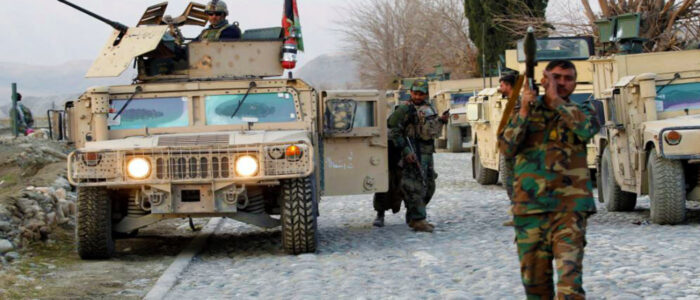Over a year after the landmark peace deal between the Taliban and the Trump administration, the United States nears complete withdrawal of its forces from Afghanistan. This has resulted in a violent Taliban resurgence with the intra-Afghan peace process deep in the doldrums. If anything, this puts a question mark on the viability of the peace agreement and the US’ withdrawal strategy.
The agreement’s manuscript, however, obliges the Taliban to negotiate peace with other Afghan actors but hardly makes an explicit mention of the US-backed government in Kabul. While the US won a safe exit from Afghanistan, the already cosmetic stability of the war-torn country was left at the mercy of textual ambiguities.
Consequently, the intra-Afghan talks failed before they could even start, whereby the Taliban has constantly exploited the leverage afforded by the unsaid clauses. Other than the aspirations to rule, the prominent bone of contention in these talks is the Taliban’s unwavering insistence on implementing their own brand of the hard-liner Islamic system. At the same time, the government wants to preserve the “western” constitution put in place in 2004 after Loya Jirga’s approval. No tangible attempt was made in the peace deal to address these irreconcilable extremes.
The hasty US withdrawal has only aided the ordeal. While giving a safe passage to the foreign troops, the Taliban has launched a full offensive on the Afghan forces. The outfit now claims to control over 80% of the country, including critical districts and border-crossings.
Taliban’s success indicates a clear disparity between them and the central government, which should not take the world by surprise. The US’ war practices in Afghanistan have ensured this inevitability. This disparity is reflective of the inadequate capacity building of the local forces. Despite the startling number of resources that have gone into the Afghan National Defense and Security Forces (ANDSF) training, it appears that they cannot hold a single fort without the US’ help.
The major advantage that the Afghan forces had over the Taliban was the aerial combat means which are being hampered as the US departs. Although Afghanistan has received a considerable number of fighter jets and helicopters from the US, it is still dependent on US military contractors for repairing and maintenance purposes.
The US has announced an all-out exodus of its non-diplomatic personnel from the country, including the contractors, akin to the grounding of the whole Afghan air fleet. Arguably the US-led training of the Afghan troops lacked meaningful knowledge and technology transfer.
Coupled with these incapacities, the military equipment that the US is to leave behind face great danger of being seized by the Taliban. They captured around 700 military trucks and the High Mobility Multipurpose Wheeled Vehicles (HMMWV) in June only. Artillery guns and assault rifles go as a bounty with these confiscations.
This is a method and not an aberration. The military equipment that the US left in Vietnam was worth $9.6 billion. The US’ war remnants create perpetual crises for societies. In Afghanistan’s case as well, it was a fallacy to imagine a swift withdrawal leaving behind a country in order.
Being the longest US’ war, it poured an unprecedented amount of armament into Afghanistan. The cost of withdrawing the whole war machine outsizes the toll of leaving much of the equipment with the Afghan forces or destroying it.
President Biden said that the US did not go to Afghanistan to nation-build. However, betraying the resolve to democratize the country and the extraordinary international efforts and resources directed toward it, this one presidential statement is the closest to the truth. The primary purpose of the invasion was to “bring Osama Bin Laden to the gates of hell” and the dismemberment of al Qaeda. The US achieved this feat a long time ago, which was only outstayed by the war by some ten years.
To the detriment of the Afghans, the US is leaving the Taliban stronger. With a feeble government in Kabul, incapacitated Afghan forces and sophisticated war inventory, the Taliban are jet set to rule the country. This ambition has been enabled by an apathetic peace process that excludes the government and the people of Afghanistan.
So, it might not be an overstretch to think that the agreement was never meant to provide Afghanistan with peace and stability. Instead, it was a token of a peaceful and swift exit for the US while leaving the country in conditions worse than it was in before the invasion.
With the British Defense Minister’s desire to cooperate with the Taliban should they come in power, it has become more apparent that the Kabul government has been abandoned by the very friends that created and protected it for years. But clearer than that is the fact that the longest US’ war is also the most extended tale of failures and apathy of modern history.
